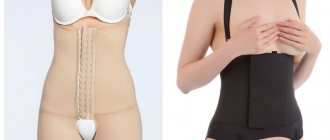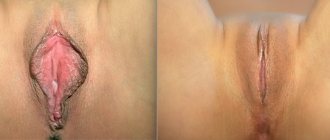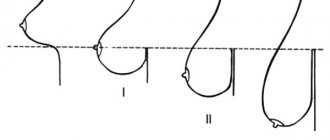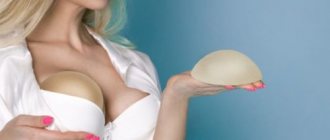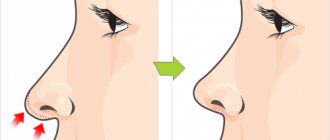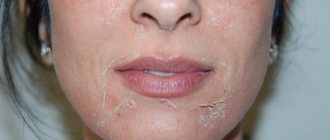More about recovery after childbirth...
—> Simultaneous operations
Do you want to find a safe and effective way to regain a beautiful body after childbirth? Then our article is intended just for you! So, recovery after childbirth .
Here you will learn what plastic surgery is: Recovery after childbirth and what types of operations there are, how the procedure is performed, indications and contraindications for its implementation.
The birth of a child is always a trembling moment that almost every woman awaits. With the birth of a baby, everything around you changes, and the world seems completely different. However, this joyful event is accompanied by traumatic lesions during childbirth. Most often, ruptures of the perineum, cervix, decreased elasticity of the muscles of the abdominal wall, sagging mammary glands, ruptures of the labia minora and much more occur. Therefore, young mothers begin to feel embarrassed about their bodies. Nowadays, medicine is rapidly developing, and today you can afford plastic surgery to restore after childbirth, which will return you to a beautiful figure without harm to your health.
Recovery after childbirth. What is plastic surgery
Recovery after childbirth is an effective modern surgical operation, thanks to which you can regain your beautiful body. This procedure should only be entrusted to qualified specialists. Today, the following operations can be performed with great success:
- Tummy tuck;
- Body plastic surgery
- Intimate plastic surgery;
- Breast plastic surgery;
- Combined surgery for plastic surgery of the abdomen, perineum, vagina, mammary glands;
- Treatment of stress urinary incontinence.
All operations are performed using high-quality anesthesia and only after preliminary preparation.
Reduction of labia minora
The increased size of the labia minora is often congenital and sometimes results from hormonal imbalances. This feature can cause discomfort when wearing trousers and underwear, and often reduces the quality of intimate life. After the operation, the labia minora cease to protrude beyond the labia majora and acquire a more beautiful and neat shape. The operation does not require the use of general anesthesia. The intervention is painless, using safe local anesthesia. No stitches are required, and after just a few hours you can return to your normal life.
Abdominoplasty
Abdominoplasty is a fairly common operation that is aimed at correcting the size and shape of the abdomen. Most often, this procedure is performed after childbirth. The operation lasts from 2 hours and is very often accompanied by liposuction, suturing of the rectus abdominis muscles, and navel transfer. Abdominoplasty is indicated for divergence of the rectus muscles, the formation of scars and adhesions, ptosis and changes in the properties of the skin.
To carry out such an operation, there are several approaches: classic, vertical, T-shaped or circular (for very large skin excesses and indications for circular body lift). The choice of the right method depends on the complexity of the plastic surgery, the individual characteristics of the body and contraindications.
Intimate plastic surgery
Plastic surgery of the intimate zone is required in cases where there is a rupture of the perineum, ruptures of the cervix and associated loss of sensitivity of the vagina, weakening of the muscles and its increase, accordingly, incomplete coverage during sex, cicatricial changes on the external genital organs. To regain a beautiful body and the joy of family life, you need to use the services of a plastic surgeon. It should be noted that such operations are common today, so there is no difficulty in performing them.
Surgical approaches can be different, it all depends on the severity of the operation. Most often, intimate plastic surgery does not take more than two hours, but sometimes the time can be increased.
About the effect after surgery
To assess the effectiveness, you need to remember the purpose for which you applied for this intervention. As far as I can judge from my practice, most often it is dissatisfaction with sex life, aesthetic considerations. A separate item includes complaints about water or air getting into the vagina, urinary incontinence and prolapse of the walls of the vagina, cervix or uterus.
If everything is in order from the point of view of solving your problems, then we have solved the problem. It is unlikely that you were pursuing the goal of feeling the bulbocasernosus muscle or holding the cones. Here you need to separate medicine and business from the point of view of selling you something.
Test for assessing the condition of the pelvic floor muscles
Now about assessing the condition of the pelvic floor muscles. I present a test presented on the website of the most famous and respected Mayo Clinic in the world. This will give you the answer to the question of how to assess the condition of the pelvic floor.
Quote: “If you still can’t find your pelvic floor muscles, insert your finger into your vagina and squeeze the muscles. You should feel the muscles tighten and your pelvic floor lift. Relax and you will feel your pelvic floor descend. Before inserting your finger into the vagina, make sure it is clean. If you are a sexually active woman, you can ask your partner if he feels how you “grip” and release his penis during sex.”
As you understand, nothing is said about the fact that you should feel lateral compression, since this contradicts the anatomy itself.
About the vaginal sphincter and the importance of the bulbocavernosus muscle in women
The term vaginal sphincter does not exist in official medicine. That is, it is in the anus, urethra, but not in the vagina, not at all, such is its structure. The bulbocavernosus muscle is initially very thin and weak even without childbirth, which is why during surgery it is always strengthened with portions of the levator ani muscle, as it is more powerful. It is she who takes part in the feeling of compression; this happens due to the rise of the back wall.
There is a direction called wumbling, which has nothing to do with medicine and the structure of the pelvic floor, and its physiology is presented there in a version that is often too far from reality.
Quote from a human anatomy textbook: “the bulbospongiosus muscle, contracting, promotes erection and the movement of urine or sperm. In men, these muscles cover the root of the penis; in women, they are much less developed and end on the clitoris or around the entrance to the vagina.”
That is, for men this muscle is extremely important, but for women it lies superficially almost immediately under the skin of the labia majora, practically does not perform any function, and is a kind of rudiment. Considering that it runs parallel to the levator ani muscle, it is impossible to somehow understand what exactly lifts the perineum. It cannot compress anything crosswise, since it is located lengthwise. It is this muscle that men can train to prolong the time of coitus, but women are deprived of this opportunity; they have it replaced by other structures. Probably, the mistake made by wumbling teachers stems from ignorance of the differences in the structure of the male and female pelvic floor.
Breast plastic surgery
Mammoplasty is a surgical operation aimed at correcting the shape and size of the breast. After childbirth, or more precisely after lactation, many women experience ptosis (drooping) of the breasts. This occurs both from breastfeeding and from hormonal changes in the body. Even women who have not breastfed can have ptosis. Therefore, plastic surgery for recovery after childbirth is a real salvation in this situation. With the help of a competent specialist who fully masters his art, as well as new technologies, you can regain your beautiful breasts.
Mammoplasty is performed under general anesthesia and lasts approximately 2-3 hours, sometimes longer. In one procedure, you can change the shape of the breast, size and adjust the areola of the nipples.
Myths and medical point of view
Once again, I will take as a basis the questions that arose from the patient I operated on.
Alexander Vladimirovich, good afternoon! My name is Olga, I had colpoperineolevatoroplasty with you on March 25th. The fact is that I am completely satisfied with the appearance, but I just can’t feel my muscles. There is a special test to determine the condition of the pelvic floor muscles, I am sending it in the attached file.
Judging by this test, I only slightly feel the levators at the depth of two phalanges, and then, only due to the retraction of the anus, I feel only along the back wall, not on the sides. In principle, even before the operation I felt them, perhaps less clearly. And when entering the vagina, I do not feel the bulbospongiosus muscle, the so-called vaginal sphincter, nothing contracts around the finger, was this muscle restored during the operation? That is, I feel the elastic platform on which the back wall lies, but I cannot fully control the muscles. I follow the recommendations, perform Kegel exercises with vaginal cone No. 3, weight 50 g.
For now I can only lie down, but in a standing position I can’t hold even the lightest cone weighing 20 g. I’ve been doing the exercises for two months. Maybe not enough time has passed or everything there has completely atrophied in 13 years. I have a question, I know that you provide a guarantee for your operations, so you do them conscientiously, tell me how to adequately evaluate the result of the operation and how to feel my muscles? Will I ever have muscle girth around my entire finger or can I only count on the result I have now? I re-read all your articles on the site, everything is very informative, I always look forward to new ones, I hope that maybe you can write an article on the topic of recovery after surgery. In my opinion, it interests not only me, but also many women who have had surgery.
Simultaneous operations
As you know, after giving birth there may be several problems with your figure that you want to eliminate. Most often these are problems with changes in the shape of the abdomen and mammary glands, an increase or loss of sensitivity in the vagina, scar changes in the intimate area. Therefore, qualified specialists can perform combined plastic surgeries that are aimed at eliminating all existing deficiencies.
Such operations can take a lot of time, but the result will bring a lot of pleasure.
It is necessary to wait this period of time for a number of important reasons.
6-12 months after stopping breastfeeding, the breasts will take their final shape and you can count on a stable result of mammoplasty. The likelihood of postoperative complications will be significantly reduced in the absence of discharge from the mammary ducts.
During this time, the weight stabilizes, because... losing or gaining even 5-10 kg after surgery can change its outcome. Finally, there is no need to rush because after childbirth your body will have time to recover and get stronger. Plastic surgery is not recommended if pregnancy is planned in the near future (1-2 years). There may be a loss of the results of the operation, a change in the appearance of the scars, but all this can be corrected.
With most types of mammoplasty, breastfeeding is maintained.
After augmentation with silicone implants, as a rule, the excretory ducts are not damaged, and the ability to breastfeed is preserved. With some lifting and reduction options, disruption of the function of the mammary glands is possible, depending on the chosen surgical technique. This must be discussed with the patient during consultation and is performed only with her desire and consent.
It is necessary to understand that in order to achieve optimal results of the operation, the contribution of the patient herself in the postoperative period is important. Only compliance with all the doctor’s recommendations and limiting physical activity in the early postoperative period gives the optimal result of the operation.
During mammoplasty, especially when enlarging the mammary glands with implants and their location under the muscles, hand movements should be minimal. The physical load on each arm should not exceed 3 kg, and the range of motion in the shoulder joint is strictly limited. The pectoralis major muscle, under which the implant is installed, is responsible for bringing the shoulder to the body and turning the arm inward (pronation). Its stretching occurs when the arm is abducted and raised.
In the postoperative period, especially the first 3-4 weeks, the pectoralis major muscles should be at rest to prevent damage to the soft tissues in the operated area and subsequent accumulation of fluid (blood), so that the implant does not move in the formed pocket and “sticks” to the surrounding tissues, was able to lock into position. Equally important is long-term wearing of compression garments (from 1 to 3 months).
Therefore, it is necessary to carefully prepare for plastic surgery in the postpartum period.
It is worth thinking in advance about how to interact with your child.
After the operation, the patient needs peace and care; she should be treated with care. The problems that you may encounter should not be underestimated - they can significantly affect the outcome of the operation performed. For example, if a child plays and gets mischievous and asks to sleep together, there is always a chance that he will touch and injure the operated area. So, if there is a need to lift the child, for example, to wash him, put him in a high chair, in a car seat, or he simply asks to be held, you need to think about how to avoid this, or do it without putting stress on the pectoralis major muscles. You can use additional steps, various supports so that the child can climb up on his own; instead of bathing, try wiping with wet wipes and moistened towels, etc.
If there are relatives and friends nearby who will help with everything throughout the day and for a long time (up to a month), they should be warned that their help will be needed in many ways, and be ready, if necessary, to take a vacation. If your loved ones do not have such an opportunity, you should think about a nanny during this time. In this case, it is advisable to introduce the child to a new person in advance in order to avoid unpleasant situations after the operation due to the child’s unpredictable reaction. If you still have to care for the baby yourself, you need to try to eliminate physical stress on your hands as much as possible. Often pain is expressed only during the first 3 days, which limits movement.
With adequate analgesic therapy and after this time, the discomfort gradually goes away, hand movements become less painful and often patients do not limit themselves in the range of hand movements. Therefore, we must remember that during the first 2-4 weeks after surgery, there is a possibility of the implant rotating and even turning (“upside down”) during physical activity and external influences (including sexual intercourse).
Stress urinary incontinence
Stress urinary incontinence is the involuntary leakage of urine during laughter, coughing, physical activity, or fear. This pathology can occur after childbirth, when trauma to the perineum, vaginal prolapse, and ligamentous disorders occur. That is why today an operation has been developed that involves installing a TVT-o loop. Thanks to this procedure, it is possible to fix the angle of the urethra so that urination will not be impaired in any situation.
Preparing for surgery
Any of the above plastic surgeries requires preparation. It includes undergoing comprehensive training and passing the necessary tests, including undergoing instrumental examination methods. In some cases, women require psychological support to decide to undergo surgery. This is not unusual because any surgery involves some risk. Therefore, it is necessary to undergo a thorough examination and trust your body only to competent specialists.
Contraindications:
- The presence of acute diseases, including infectious ones;
- Exacerbation of chronic pathologies;
- Blood diseases;
- Malignant neoplasms of any location;
- Mental illnesses of any etiology;
- Skin diseases in the acute stage;
- Lactation period (completion of lactation and readiness for surgery on the mammary glands is checked by ultrasound examination of the mammary glands)
Plastic surgery Recovery after childbirth is a reliable and safe way to regain a beautiful body. Nowadays, medicine is rapidly developing, new methods, medicines, and equipment are appearing. Therefore, in our time, the percentage of successful operations
The cost of plastic surgery can be found in the “Prices” section.
You can make an appointment by calling +7 (495) 505-5235, +7 (901) 745-4775 at any convenient time from Monday to Friday 09-30 to 17-00.
We will be happy to help you!
Copyright information...
Attention! Any copying or distribution of this content is prohibited. Unauthorized copying and use of text entails legal liability:
— civil liability for copyright infringement in accordance with Articles of the Civil Code of the Russian Federation No. 1252 (“Protection of exclusive rights”), 1253 (“Responsibility of legal entities and individual entrepreneurs for violations of exclusive rights”); — administrative liability for copyright infringement in accordance with Article of the Code of Administrative Offenses No. 7.12 (“Violation of copyright and related rights, inventive and patent rights”); — criminal liability for copyright violation in accordance with Article of the Criminal Code of the Russian Federation No. 146 (“Violation of copyright and related rights”).
Close text.
Removal of stretch marks (striae)
Many pregnant women are concerned about the question: will stretch marks appear on the body after childbirth? After all, during pregnancy there is both rapid weight gain and hormonal changes in the body. According to statistics, 50% of women develop stretch marks at this time, and not after the birth of a child. Their most “favorite” places are the stomach, hips and chest, but with serious endocrine problems, stretch marks can even appear on the face.
This happens not because the skin is stretched, but because of a disruption in its structure caused by hormonal fluctuations. As a result, streaks of pale pink or lavender color appear on the body. This is what “fresh” stretch marks look like. This is explained by the fact that the connective tissue in the internal tears of the skin is thinner, riddled with blood vessels, giving it a red or bluish color. If you do not fight stretch marks, then over time they will turn white and become like scars. There is no pigment in scar tissue, which is why stretch marks remain white when tanned.
What is the essence of the operation? There is no separate operation to remove stretch marks; they are removed during abdominoplasty or mastopexy (we talked about them above).
Advice. If stretch marks are small and appear recently (within six months after giving birth), they can be smoothed out and reduced using chemical peeling or laser resurfacing. However, stretch marks that appeared a long time ago are almost impossible to completely remove without surgery.

